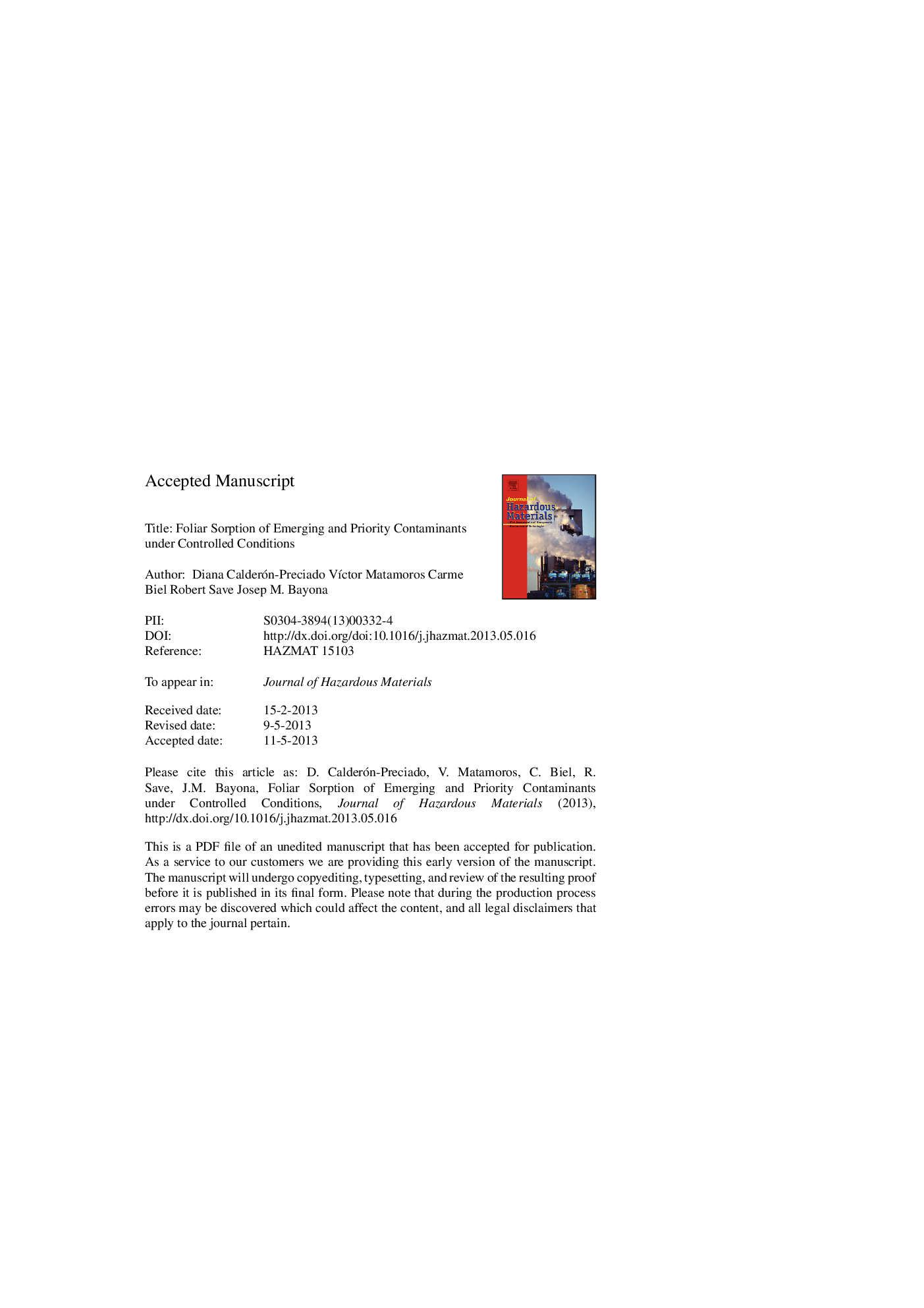| Article ID | Journal | Published Year | Pages | File Type |
|---|---|---|---|---|
| 6972278 | Journal of Hazardous Materials | 2013 | 22 Pages |
Abstract
Agricultural irrigation water contains a variety of contaminants that can be introduced into the food chain through intake by irrigated crops. This paper describes an experiment under controlled conditions designed to simulate sprinkle irrigation with polluted water at two different relative humidities (40 and 90%). Specifically, shed lettuce-heart leaves were spiked with an aqueous solution containing organic microcontaminants, including pharmaceuticals (ibuprofen, diclofenac, clofibric acid, and carbamazepine), fragrances (tonalide), biocides (triclosan), insecticides (lindane), herbicides (atrazine), phenolic estrogen (bisphenol A), and polycyclic aromatic hydrocarbons (phenanthrene and pyrene). Following an incubation period (48 h), the treated leaves were rinsed with water, and both the solution used to rinse them and the leaves themselves were independently analyzed to investigate the foliar sorption and uptake of the spiked organic contaminants through cuticle. The results showed that the foliar sorption of emerging and priority microcontaminants in leaves wetted by irrigation practices is related to their polarity (log Dow) and volatility (log kH), regardless of their compound class and the relative humidity. The results thus underscore the need to improve the quality of reclaimed water in crop irrigation, particularly when sprinkle irrigation is used.
Related Topics
Physical Sciences and Engineering
Chemical Engineering
Chemical Health and Safety
Authors
Diana Calderón-Preciado, VÃctor Matamoros, Carmen Biel, Robert Save, Josep M. Bayona,
